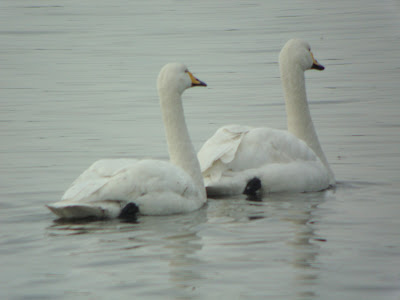Frost and ice dominated the weather this weekend [14-15 Jan] when most of my birding involved water birds of one sort or another.
On Saturday I took part in Beds Bird Club’s ‘Great Duck Hunt’ which is an annual county-wide survey of birds found on or near water - this being the third year that I had volunteered to check sites in the Flitwick area. I have to admit, I never see a great number of water birds to record but it makes a very pleasant walk, especially when it’s a bright, frosty morning – as was the case this year. Carolyn kindly offered to help me with the survey and we started by walking along the millstream, then into Flitwick Moor, on to Flitton Moor, and finished with a visit to Hollington Basin - a seasonal flooded area north of Flitton.
Along the path from Flitwick Moor to Flitton Moor we passed a field holding the flock of Soay Sheep used by the local Wildlife Trust for habitat management on nature reserves...
Best birds of the walk overall were a singing Goldcrest in conifers in a Flitwick garden, a pair of Bullfinches feeding on frosted seed heads along the path to Flitton Moor, and two Little Egrets flying over Flitton Moor.
On Sunday I went out with the Bedford RSPB Local Group. The morning was spent at the Ouse Washes in Cambridgeshire where the wildfowl were having to cope with large areas of frozen water. Some were quite comical as they struggled to stay upright on the ice but this pair of Pintails looked as elegant as ever, despite the slippery conditions.
At WWT Welney in the afternoon we were able to catch up with both species of Winter Swan – Whooper and Bewick’s. The more numerous of the two species were the Whoopers...
Generally the Bewick’s Swans kept a reasonable distance from their larger cousins, but I managed one photo showing birds of both species [below] In the foreground are two Whooper Swans, with the yellow patch on their bills ending in a sharp point; while the three Bewick’s behind have blunt, rounded yellow bill patches.
In March the Winter Swans will set off on their long journey back to breeding grounds in Iceland, so it was good to have an opportunity to see them once more before they leave and hear their bugling calls as they flew in to the reserve.














